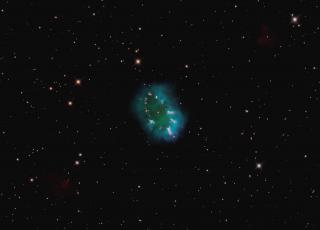Bibcode
Sabin, L.; Parker, Q. A.; Corradi, R. L. M.; Guzman-Ramirez, L.; Morris, R. A. H.; Zijlstra, A. A.; Bojičić, I. S.; Frew, D. J.; Guerrero, M.; Stupar, M.; Barlow, M. J.; Mora, F. Cortés; Drew, J. E.; Greimel, R.; Groot, P.; Irwin, J. M.; Irwin, M. J.; Mampaso, A.; Miszalski, B.; Olguín, L.; Phillipps, S.; García, M. Santander; Viironen, K.; Wright, N. J.
Bibliographical reference
Monthly Notices of the Royal Astronomical Society, Volume 443, Issue 4, p.3388-3401
Advertised on:
10
2014
Citations
79
Refereed citations
64
Description
We present the first results of our search for new, extended planetary
nebulae (PNe) based on careful, systematic, visual scrutiny of the
imaging data from the Isaac Newton Telescope Photometric Hα Survey
of the Northern Galactic plane (IPHAS). The newly uncovered PNe will
help to improve the census of this important population of Galactic
objects that serve as key windows into the late-stage evolution of low-
to intermediate-mass stars. They will also facilitate study of the faint
end of the ensemble Galactic PN luminosity function. The sensitivity and
coverage of IPHAS allows PNe to be found in regions of greater
extinction in the Galactic plane and/or those PNe in a more advanced
evolutionary state and at larger distances compared to the general
Galactic PN population. Using a set of newly revised optical diagnostic
diagrams in combination with access to a powerful, new, multiwavelength
imaging data base, we have identified 159 true, likely and possible PNe
for this first catalogue release. The ability of IPHAS to unveil PNe at
low Galactic latitudes and towards the Galactic Anticentre, compared to
previous surveys, makes this survey an ideal tool to contribute to the
improvement of our knowledge of the whole Galactic PN population.
Related projects

Bipolar Nebulae
This project has three major objectives: 1) To determine the physico-chemical characteristics of bipolar planetary nebulae and symbiotic nebulae, to help understanding the origin of bipolarity and to test theoretical models, mainly models with binary central stars, aimed at explaining the observed morphology and kinematics. 2) To study the low
Antonio
Mampaso Recio